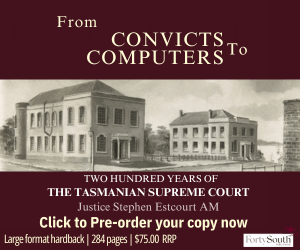In AKW22 v Commonwealth of Australia [2023] FCAFC 71 (17 May 2023), the Full Court, constituted by Rares, O’Sullivan and Feutrill JJ, considered an appeal by an Indian national who had been held in immigration detention for 10 years, and, who sought the issue of a writ of habeas corpusor orders in the nature of habeas corpus.
The appellant asserted that his detention was unlawful. He put on affidavit evidence in which he deposed he had been in unbroken detention for the past 10 years, and provided the locations of his detention.
The appellant submitted that he only needed to show the fact of his detention before the onus shifted to the respondent – to demonstrate the lawfulness of his detention, as is the case in claims for false imprisonment. In so doing, reliance was placed on obiter by Mortimer J in McHugh v Minister for Immigration, Citizenship, Migrant Services and Multicultural Affairs (2020) 283 FCR 602 at 665 at [282].
The primary judge refused the application for a writ of habeas corpus or similar orders. His Honour considered that the applicant had to show that, at the time of hearing, his detention was unlawful. His Honour found that unless and until the applicant had discharged this evidentiary burden, the respondent was not required to prove the lawfulness of the appellant’s detention.
His Honour concluded that the detention of a person under s189(1) of the Migration Act 1958 (Cth) (Act) depended upon the relevant officer having, at any particular time, the required knowledge or reasonable suspicion that the detainee was an unlawful non-citizen. There was undisputed evidence that, at the time of the hearing, there was an officer who held the required knowledge or suspicion.
His Honour found the duration of the appellant’s detention was not sufficient to discharge the appellant’s initial evidentiary burden, and that the claim must fail.
On appeal, the Full Court upheld the primary judge’s decision and reasoning. After reviewing the legal history of habeas corpus (at [10]-[18]), their Honours concluded that, when seeking a writ of habeas corpus or an order in the nature of habeas corpus, an applicant must demonstrate – by showing “probable cause” or “a case fit to be considered” – that at the time of the hearingfor the issue of the writ, his or her detention is unlawful (at [19]). Only once this evidentiary burden is discharged does the onus shift to the detainer to prove the lawfulness of the detention (at [20]).
Their Honours rejected the appellant’s submission that there was no distinction between the requirements of an application for habeas corpus and a claim for false imprisonment. Further, they did not accept that this was what was intended by Mortimer J in McHugh.
The Full Court noted a number of differences in the causes of action:
- in the case of habeas corpus, the applicant must demonstrate that, at the time of applying for the writ, there is a “case fit to be considered”, whereas in the case of false imprisonment, the applicant must demonstrate only the fact of his or her imprisonment (at [39])
- proving the fact of imprisonment is not the same as proving in habeas corpus proceedings that there is a “case fit to be considered” (at [40])
- there is a difference in the times at which the burden of proof for the detainer is called upon to be satisfied (at [41]).
The appeal was dismissed with costs.
Shanta Martin is a barrister at the Victorian Bar, ph 03 9225 7222 or email shanta.martin@vicbar.com.au. The full version of these judgments can be found at www.austlii.edu.au. Numbers in square brackets refer to a paragraph number in the judgment.













Share this article